Satyajit Ray’s 'Maa Dugga': Exploring divergent essence of life – GetBengal story
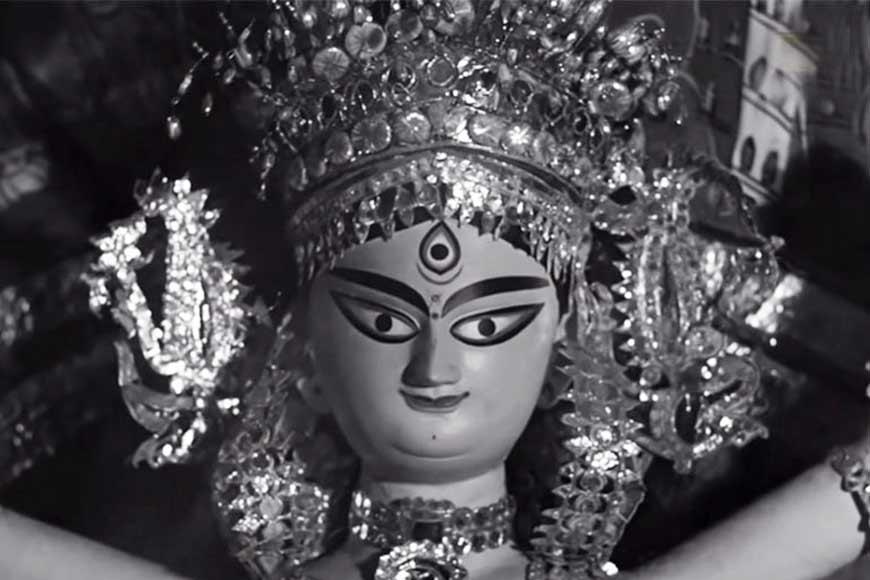
‘Goddess Durga was created by combining the luminosity of Brahma, Vishnu, Shiva, Indra, and all the other gods. The 10 arms of Durga hold 10 different weapons.” - This is not just a story from the Puranas, but a dialogue from a feature film. Satyajit Ray's famous film 'Joi Baba Felunath’ begins with this dialogue.
Movies are a reflection of the real world. Every movie is connected to reality. For Bengal, Durga Puja is not just a four-day event but an integral part of life embedded in hundreds of years of culture. That is why this festival has appeared in Bengali films at various times, sometimes in the background, sometimes as the central theme of a movie. After a year-long anticipation, Durga Puja is here again, knocking at the door. This family-orientated festival heralds a time of joyous revelry for Bengalis.
Hindi cinema frequently exhibits a unique quirk. Whenever directors depict Kolkata, they use Durga Puja as a familiar and iconic visual.
Do you remember the climax of the movie 'Kahaani'?
It plays out on the night of Vijayadashami (the last day of Durga Puja) when the idols are being taken for immersion. The loud and sombre sound of dhak (a percussion instrument) reverberates in the air, and women draped in red-bordered white sarees apply vermillion on each other, another prototypical visual. In short, the climax beautifully unveils the Bengali nostalgia for Durga Puja. However, the portrayal of Durga Puja in Bengali cinema is not a new or novel trend.
Satyajit Ray initiated this trend in films in the 1950s. Durga Puja is sometimes the focal theme in his film, and in some, Durga Puja and its paraphernalia run through the film like a leitmotif. The iconic visual representation of Durga Puja has returned again and again in Satyajit Ray's different films. Ray pioneered manifesting Durga Puja in Bengali films.
Each of his films that centred around Durga Puja had a diverse and unique context. As the puja evolved, the director, with his keen foresight, unfolded his plot according to altered time and situation. Here is the list of those movies:
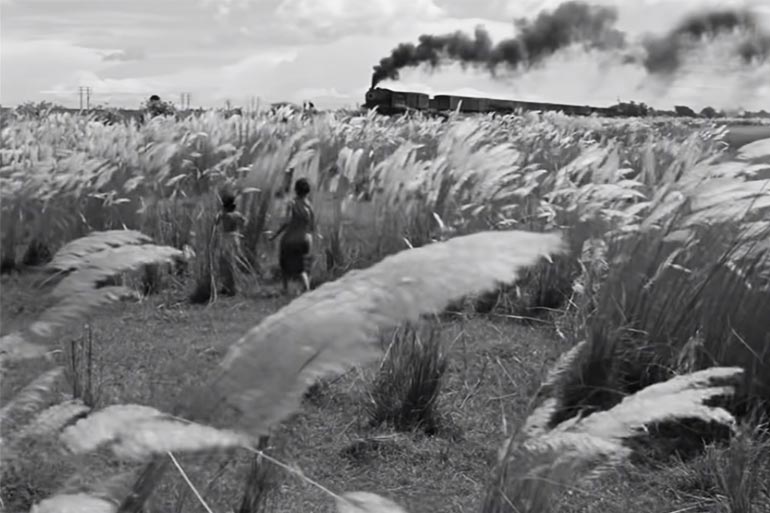
Pather Panchali (1955)
Based on the novel by Vibhutibhushan Bandyopadhyay, Pather Panchali was the first Bengali film directed by Satyajit Ray. He created history with his directorial debut. Glimpses of Durgotsav celebrations at the house of the wealthy Roy family of Nishchindapur form the backdrop of the film. The puja heralds celebrations and depicts the economic disparity between the rich and poor. Two innocent children from an impoverished family are oblivious to their poverty as they are drawn to the festivities. They socialise with neighbourhood children from a secure financial background and share their joys and dreams, unaware of the impending catastrophe that awaits them and is going to turn their lives topsy-turvy. Ray deftly etched out the vignettes of Durga Puja with love and tenderness.
The most gripping scene of the film is when the siblings wander through dense Kashful (wild sugarcane) blossoming on the outskirts of the village as they wait to get a glimpse of a train for the first time in their lives. We will see Apu in the two other sequels of ‘Pother Panchali,’ but this is Durga's final puja celebration before her demise. One rainy day, Durga gets drenched and falls ill. She succumbs to her death due to lack of proper treatment. Durga-Apu's mother, Sarvajaya, also plays a major role in the story, who holds the reins of the family despite severe poverty. However, she too breaks down in the end when overpowered by suppressed grief for the loss of her daughter. Ray’s dexterity as a brilliant visual storyteller immortalised the film.
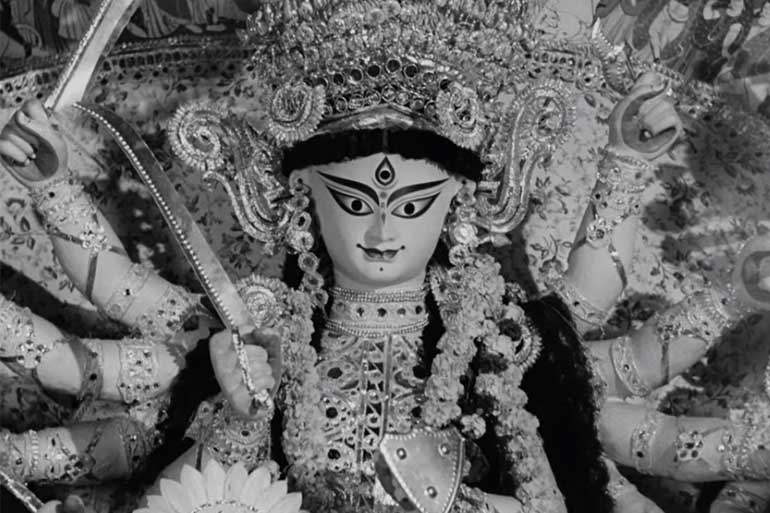
Devi (1960):
The film is based on Prabhat Kumar Mukhopadhyay's story, 'Devi' written on the advice of Rabindranath Tagore. Ray portrays the implications of Mahamaya in Bengali middle-class society in this film. 'Devi' begins during the puja. It is Vijaya Dashami, and after the customary goat sacrifice, the idol is being prepared for immersion at the zamindar’s house. At this juncture, the story begins. In keeping with the theme, at the beginning of the film, an artisan is shown sculpting a traditional clay idol of Durga in the background as a succession of title cards appear on the screen. The patriarch of the film, Kalikinkar (Chhobi Biswas), dreams that his youngest daughter-in-law, Doyamayee (played by Sharmila Tagore), is a reincarnation of Goddess Mahamaya and starts worshipping her. The director who composed the song “Ebar Tore Chineschi Ma” in Ramprasadi tune for this film. Ray had to face many controversies for making this film.
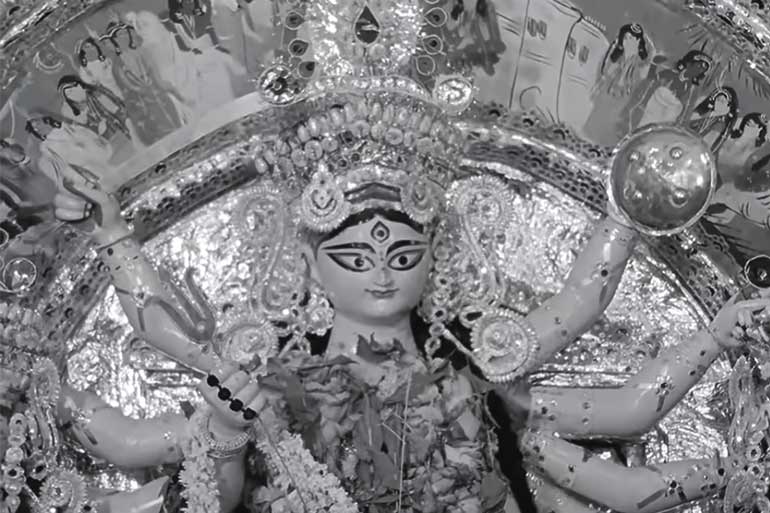
Nayak (1966):
In this film, famous matinee idol Arindam Mukherjee (played by Uttam Kumar) reminisces about Durga Puja in his neighbourhood and about performing in plays that were staged on Maha-Ashtami. "Shankar Da used to say that feeling of piety stems from within only when I see the ‘chaalchitra’ (the painted background of a Durga idol), the ‘Daaker saaj’ (a decorative embellishment for the idol of Maa Durga during Durga Puja), and those large eyes looking at her devotees,’ says Arindam. Therefore, in their precinct, the goddess’ idol used to be decked in traditional attire. During one such puja, Shankar Da, Arindam's theatre guru, suddenly falls and dies on the day of Vijayadashmi. The director has highlighted the emotions that Bengalis feel during this celebration in the dialogues of the film.
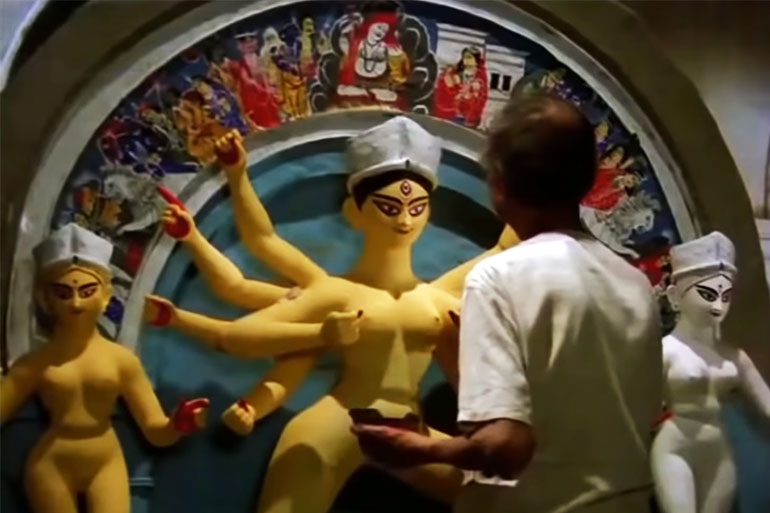
Joi Baba Felunath (1979):
This is Ray’s second film based on the detective, Feluda. The movie unfolds during Durga Puja in Benaras. On a holiday trip to Benaras, Feluda (Soumitra Chattopadhyay) bumps into a situation where he has to solve an enigmatic case. Feluda is tasked with rescuing a precious Ganesha idol that has disappeared from the house of a prominent Bengali family in Benaras.
The film opens with Shashi Patua, an old but brilliant sculptor, working on the podium in the courtyard (thakur daalan) of the Ghosal family. He is busy making the idol of Durga while chatting with Rukminikumar, aka Ruku, a young, curious boy. Shashi Babu narrates the mythological tale about Durga Puja's origin. Little Ruku listens to the fable and asks, ‘Is this all true?’ Shashi Patua answers with full conviction, "How can I tell a lie, Ruku Babu?" Ancient sages have written these texts. In other words, these ancient texts are infallible, and we should not question them. Though the target audience of the film is young adults, the director very cleverly conveys a message to society. Although Durga Puja is not the central theme of this film, Ray has beautifully presented visuals associated with the festival. At the end of the film, the puja becomes an important point in uncovering the mystery.
Ray’s films continue to make us think about a variety of topics. Encouraging critical thinking at every level. So, criticism of his films by sections of Bengali society is a recurring topic. This puja, let us revisit Ray’s films and search for the Durga he envisaged in his frames. Our exploration may lead us to discover new facets of Durga and a new way of life.










